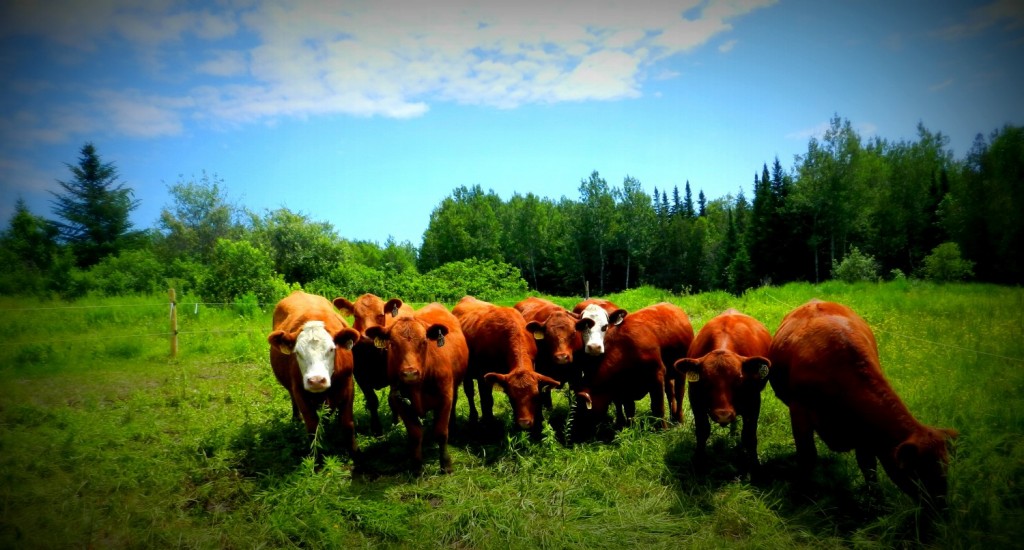When my wife and I decided to start a cattle farm years ago, we had a specific goal in mind. 100 head of momma cows in ten years. I’m still not sure why exactly I went with the 100 head, but it seemed like a good lofty goal to shoot for, and at the time it made mathematical sense. If you start with 10 heifers, retain all heifer calves as future cows and continue that practice for 10 years, you’re in the 100 head club.
Boy, did I have a lot to learn! For starters, I initially thought that a cow was a cow. They were all the same. Four legs, eats grass, pops out a calf each year. I’d soon learn that wasn’t even close to the truth.
We were looking for some cattle in our area, so we scouted a few places and saw some pretty badly managed critters with poor genetics. We didn’t know that at the time, but after I had a really good vet do a farm visit on one prospective herd, I learned to trust his opinion, and he put us in touch with a top notch cattle producer who had some heifers for sale.
We started our cattle herd with the purchase of 10 red angus yearling heifers from a top notch producer here in northern Maine. Good cattle come at a price, and we had to take out a loan through the Farm Service Agency to make the buy. We had those heifers bred and wintered them the first year. After most of them calved the first year, we took out another loan and purchased a second set of 10 heifers from the same place.
Our experience developing a cow herd from 20 purchased heifers is still ongoing, but it’s already taught us a whole lot. The bottom line is that we’re growing our herd much slower than we’d initially planned. Based on my experience, here are a few thoughts on how fast you should grow your cattle herd.
1. All cattle are NOT equal. If you keep every cow in your herd regardless of performance, you won’t have much for quality after a while. You as a cattle owner need to decide how rigorous you will cull animals from your herd, and you probably won’t realize how you’ll make these decisions until you own and spend time with your cattle. Over time, we realized we were tougher at culling animals than we ever would have thought. How you cull plays a huge role in how fast your herd will grow.
2. You can’t have more cattle than your land can support. We originally thought land was one of those things that wouldn’t limit us, but soon realized that just because you’re surrounded by an abundance of unused land doesn’t mean it’s ready to be grazed. Factors like different landowners, distance from your farm, fencing needs, availability of water and electricity and other details can definitely slow the otherwise fast growth of a cattle herd. Can’t pay for the land without the cattle, can’t pay for the cattle without the land.
3. Debt can be good and bad. They say debt is a good master. It keeps folks on their feet, working to make sure they make loan payments. If it weren’t for the FSA, we wouldn’t have the cow herd we have now. It’s been an incredible opportunity. That said, I’m naturally averse to debt. The constant reporting of income and assets, frequent paperwork and the underlying stress of knowing you have payments to make just drives me crazy. I’d rather own things than borrow them. There’s a freedom associatioed with that, and it really appeals to me. The growth of our cattle herd has slowed because we’ve made it a priority (at the moment) to pay down debt and regain the freedom associated with ownership.
4. The cattle market can get in the way. If you follow the wise folks who understand the cattle market, you’ll want to be growing your herd during a downturn in the cattle cycle and liquidating during the high times. Keeping to those rules, it doesn’t make much sense to employ a strategy of maximum growth regardless of prices and market conditions.
So there you have it. It’s not always ideal to grow a cattle herd as fast as biologically possible. I hope you’ll consider these lessons we’ve learned to gain a better understanding of how fast you should grow your cattle herd. Being new in the cattle business is exciting. There are so many great opportunities out there, but if we make poor decisions we won’t be the ones still in the business ten, twenty or thirty years from now. Let’s be smart and play the long game. It’ll work out!





